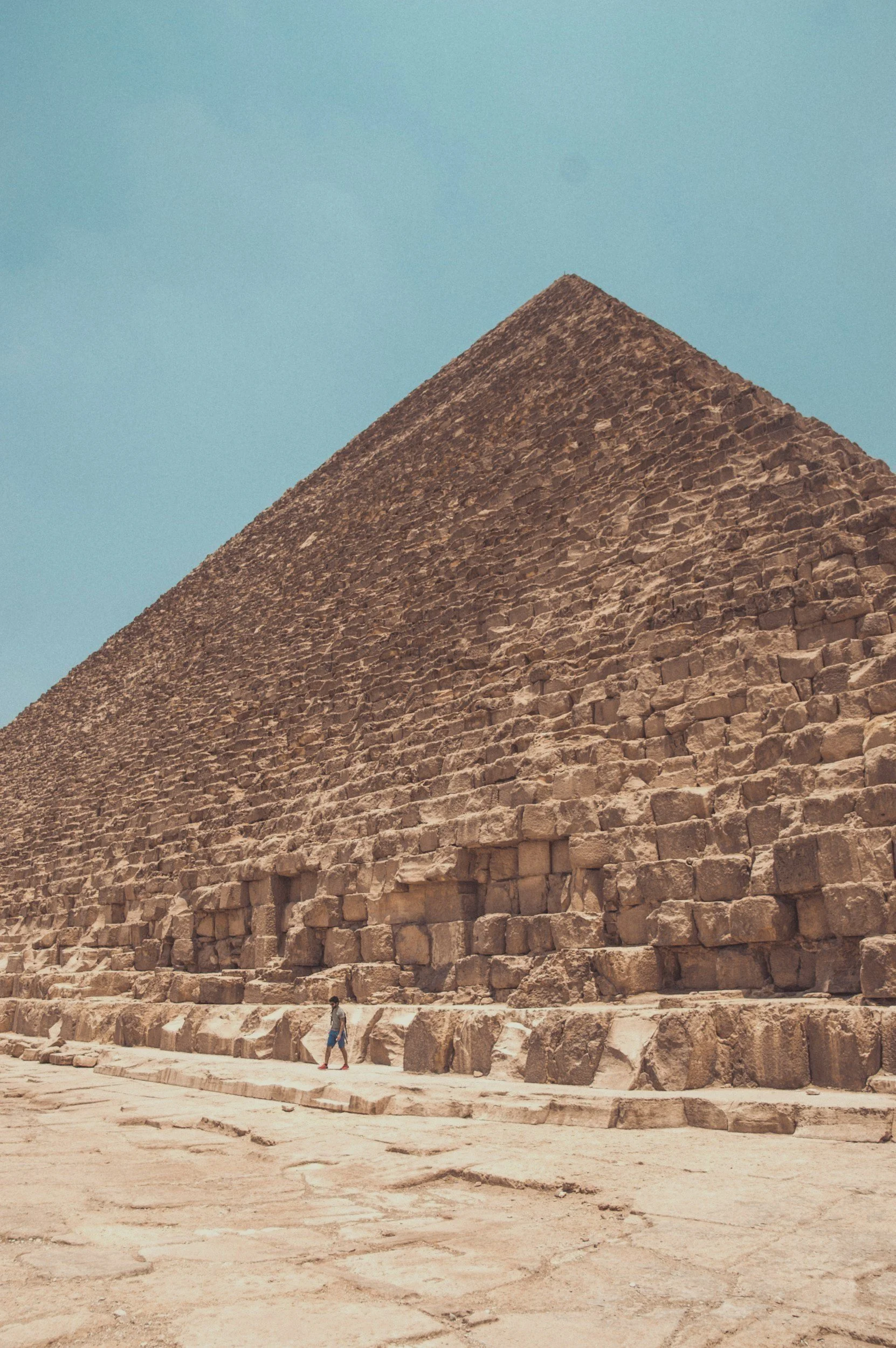The Pyramids of Giza
A Giant Feat of Engineering
Centuries ago, the pyramids looked very different from today. They stood taller, and instead of rugged and ancient—they’d be smooth, wrapped in polished limestone that reflected the sun. Over time, stones and materials were stripped away, repurposed to build houses, mosques, and perhaps even parts of Cairo itself. But a small hint of their former glory can still be found at the top of the pyramid of Khafre. A small part of it remains… catching the light in the late afternoon, a faint glimmer that is fleeting, almost shy.
What isn’t shy is the meticulous precision of how these monuments were placed, built, and calculated. Over the years, thousands of theories and ideas have circulated, but a few weigh heavier than others. What we do know is that the Great Pyramid of Giza is aligned almost perfectly to the four cardinal points—north, south, east, and west. To the precision of less than 0.05 degrees. A monument stretching over 5 hectares, and originally over 145 meters tall, is only—dare we say—misplaced by a number so small it would be difficult, maybe even impossible, with today’s technology, without incredible knowledge and precision of craft to replicate. How it was achieved is a mystery in itself. Theories include using the stars, the sun, perhaps even shadows. What we can say without fault is simple: we don’t know.
Experience the Pyramids of Giza
The intricacies don’t stop there. Corridors in the Great Pyramid, particularly in the King’s Chamber, align with stars that had very specific meanings in this ancient civilization. After accounting for the slow shift of Earth’s axis, we know that at the time of construction the southern shaft pointed upward at an angle that intersected Orion’s Belt, a constellation associated with Osiris, the Egyptian god of the afterlife. The northern shaft, angled just as carefully, pointed toward Thuban in Draco—the pole star around 2500 BCE. These were not accidents of direction, but deliberate alignments that tied the pharaoh’s resting place to the sky.
The Pyramid of Khafre
Even the materials speak of sophistication. The King’s Chamber is encased in massive granite blocks transported from quarries hundreds of kilometers away. Some of these blocks weigh tens of tons, and yet they were fitted with remarkable precision, their surfaces so flat and angles so exact that modern engineers continue to marvel. Faint marks on the stone suggest the use of copper tools, ropes, and levers—but how these simple methods could achieve such results is still debated. In fact, we can’t fully explain it. It’s why you hear theories of extraterrestrials and forgotten civilizations, lost knowledge of forces we imagine as magic today. But the more logical explanation is much simpler: the pyramids likely took decades to build, with workforces of tens of thousands of people. At this time in history, the Nile flooded seasonally, and the fields on which the population grew their crops were left underwater. Monumental projects may have served as a form of tax, absorbing this labor force during idle months. With enough time, enough workers, ramps, and a mastery of incremental tricks—much is possible. The people of the past were not less intelligent than we are today. The difference lies only in the compounding of knowledge. There is no reason to underestimate their genius.
Experience It
Yet there are still puzzles we cannot see directly. Above the Grand Gallery, scans have revealed large voids whose purpose remains unknown. Hidden chambers, relieving spaces, or something else entirely—these are features that haven’t yet been explored. Tiny details—the subtle grooves on certain stones, the precise angles of shafts—carry hints of methods and intentions that are now lost to time. Each reveals a layer of calculation, effort, and ingenuity, but never the full plan.
Even today, these elements—the alignments, the voids, the transported stones—invite questions. The pyramids are at once concrete and enigmatic, monumental yet incomplete in the sense of what they reveal. Every discovery leads to another mystery, and for those who look closely, the plateau offers a narrative not of spectacle or legend, but of human skill, planning, and questions that continue to challenge our understanding.
The Pyramids await.






